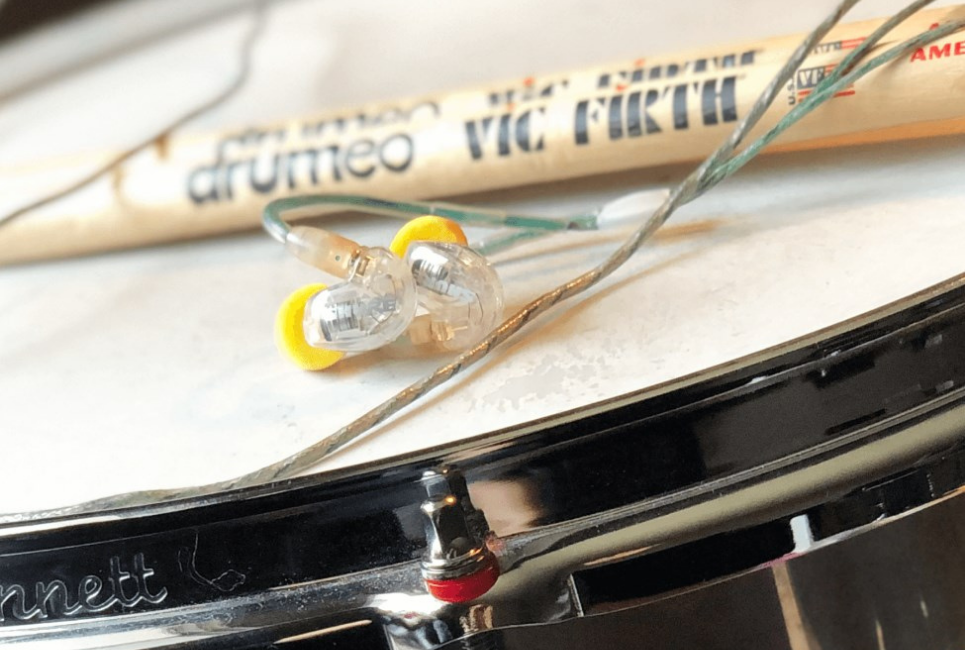- Lights, Camera, and Action: How to Film and Edit a Drum Cover - May 31, 2022
- The Best Wuhan Cymbals: A Comprehensive Buying Guide - May 30, 2022
- Alesis Surge vs Command Compared - April 26, 2022
Sitting beside one of the loudest acoustic musical instruments in the band can make it harder for drummers to figure out what their fellow bandmates are playing. A good drummer can manage to stay on time, but as you may already know, those loud cymbals and snare drums don’t make your job any easier when it gets noisy during gigs.
In-ear monitors offer many utilities for drummers besides noise cancellation and protection from noise-induced hearing loss. They have revolutionized the world of music to the point that nearly all live bands are using them right now. Be it a live performance or a sweaty studio session, a good pair of in-ear monitors will help you sync with the rest of the band like nothing else.
We can all agree on the fact that drummers are the backbone of a band. They are responsible for maintaining both the tempo and the intensity of musical parts, which is why they cannot afford to make any mistakes. Switching to in-ear monitors allows drummers to be on top of their game at all times, especially during intricate parts.
Buying a new pair of in-ear monitors can be fairly challenging, given the abundance of options available in the market right now. While some brands offer to make customized monitors based on impressions of your ear canals, others are making universal models that fit all. With our extensive guide on in-ear monitors for drummers, you will have all the information you need to pick out your next pair.
Early History of In-Ear Monitors
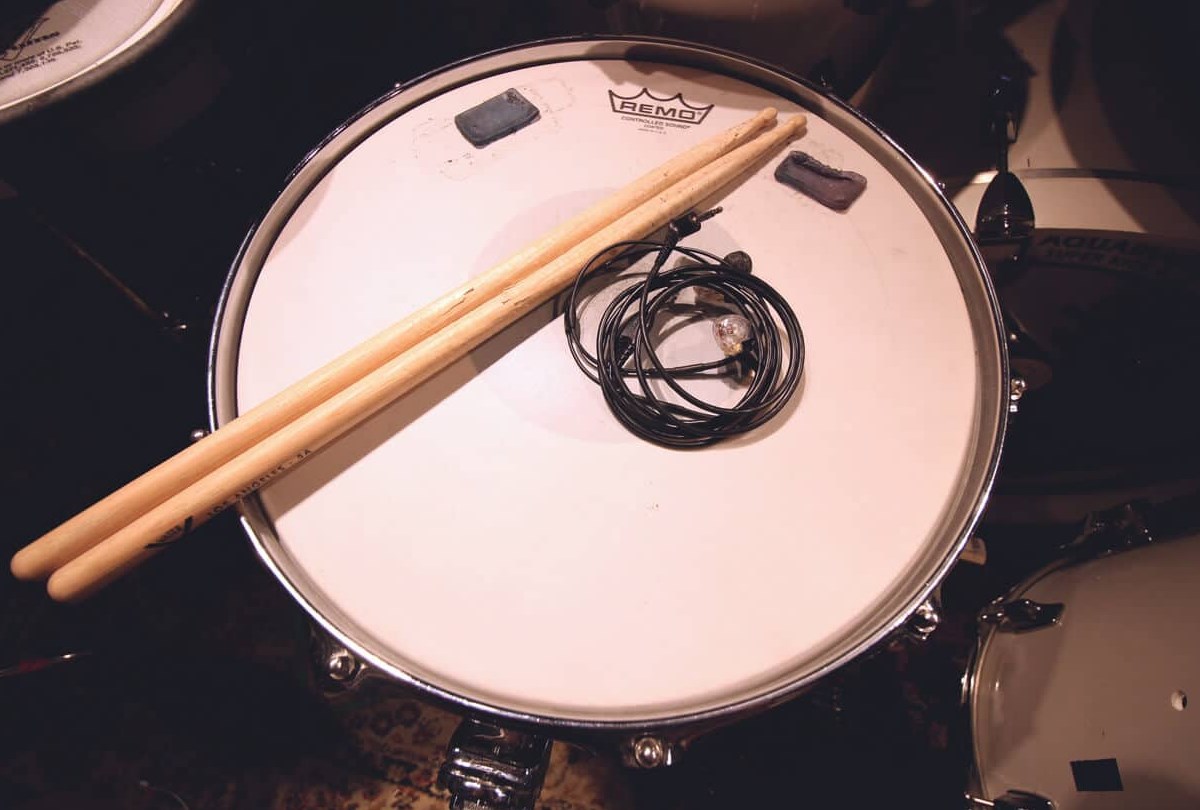
The birth of in-ear monitoring technology, or IEM, stems from the innovative thinking of sound engineers and consumer demand which was building up ever since live shows became prominent. Before this technology came along, musicians relied on stage sounds that were fed through floor monitors and PAs.
Traditional floor monitors caused a plethora of problems for performing musicians apart from tinnitus, which could last for days after a gig. Not to mention, the issues sound engineers faced when dealing with acoustic feedback, gain levels, and complexity of the mix were quite an ordeal.
Chrys Lindop, an experienced sound engineer, was among the first few who addressed the issues of stage-sound monitoring. As he had professional experience working with musicians such as Stevie Wonder, Bjork, Maggie Reilly, Elaine Paige, and Mike Oldfield, he understood the gravity of these issues really well. Chrys played around with the idea of in-ear monitoring with George Glossop, using Howard Jones as a subject in order to understand the challenges of this technique.
Soon after they realized that it is possible to use in-ear monitoring for live scenarios, they were faced with the problem of cables that were restricting the movements of musicians on stage. In the late 1980s, Chrys put together a wireless in-ear monitoring system for Stevie Wonder with the help of an FM radio transmitter, a pocket FM receiver, an Aphex dominator multi-band limiter, and a set of Sony earbuds.
Soon after that, Chrys paired up with engineer Martin Noah to form a company called Garwood that designed the first commercially available in-ear monitoring system and as we all know it, the rest is history. Future iterations of IEMs focused on delivering a better quality of sound, noise isolation, and connectivity while eliminating the drawbacks of previous models.
The Major Differences Between In-Ear Monitors and Earphones
At first glance, IEM’s and earbuds might look the same, but they actually differ on many levels. Some of the most notable differences between the two have been listed below:
- Noise isolation
- Volume
- Sound quality and driver composition
- Comfort
Noise Isolation
Earbuds, typically designed to fit all, function like speakers placed right next to your ears, whereas IEM’s are fitted directly into your ear canal, offering a higher degree of noise isolation. In live scenarios, they can double up as hearing protection against loud noises by reducing them to safer levels.
Volume

A lot of the time, we find ourselves having to crank up the volume on our earbuds to drown out the ambient noise, which can damage your hearing. Whereas in-ear monitors, on the other hand, will seal off your ear canals from the background noise.
In turn, it’ll result in a much better listening experience, even at low volumes. IEM’s tend to sound louder without necessarily bumping up the decibels because of their excellent noise isolation properties.
Sound Quality and Driver Composition
Earphones often rely on a single dynamic driver to handle the bass and a couple of balanced armature drivers for mids and high frequencies. Whereas, needless to say, you can achieve a much higher clarity and precision with in-ear monitors that can host multiple drivers per earpiece.
Comfort
Earphone manufacturers go with the one-size-fits-all approach, which can be a hit or miss for most people. They usually sit on the outside of your ears and will inevitably become uncomfortable over long stretches, whereas IEM’s are incredibly comfortable.
High-end IEMs can come with multiple ear tips to choose from, as well. You can always look for aftermarket solutions on the internet, if needed.
Advantages of In-Ear Monitors
The benefits of in-ear monitors stretch beyond musicians to the sound engineer, members on stage, and even the audience. These include:
- A better mix
- Absence of feedback
- Noise isolation
- More freedom to move on the stage
A Better Mix
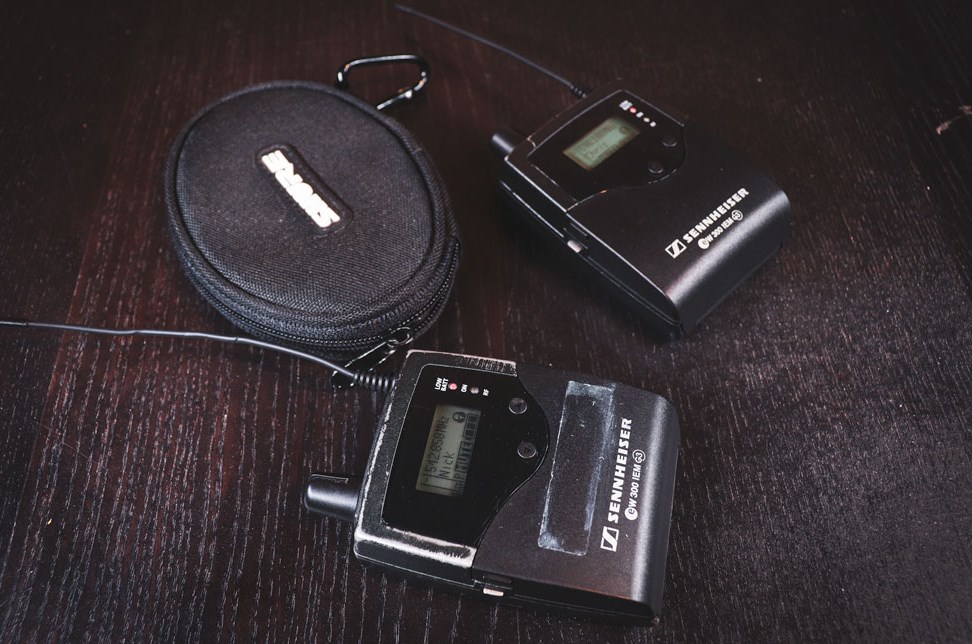
Floor monitors and PAs were the go-to options for musicians to monitor their live sound before in-ear monitoring technology came along. Their biggest drawback was that you had to position yourself right in front of their audio cone to get an accurate perception of your sound on stage. This was quite a hassle for musicians while performing live and would often get worse as you added more instruments and monitors on stage.
In-ear monitoring systems allow you to dial in all the instruments of your band members into your mix at desired levels. In other words, it gives musicians the freedom to choose from what they want and don’t want to hear in their mix.
With in-ears you are able to hear yourself and your band members perfectly at all times during a performance. A better perception of your live sound allows you to make decisions with high precision and also avoid making mistakes.
Absence of Feedback
Feedback comes into the picture when microphones are trying to capture the sound from a speaker. Once it gets into a loop, it amplifies over time and can create some unpleasant artifacts on the PA. In-ear monitors eliminate this problem entirely by isolating your signal chain from those of other band members.
Noise Isolation
Drummers can make or break a band’s live sound on stage. Additionally, they have to know what other members are playing at all times too. In-ear monitors isolate the unnecessary chatter of live venues which helps drummers focus on their performance as well as other members of the band.
More Freedom to Move On the Stage
Traditional monitors would ground musicians to a set position on stage if they wanted to hear their parts correctly. Once in-ears got introduced, they changed the game completely by allowing musicians to freely roam on stage without hampering their mix. As long as you stay within the range of the transmitter you are free to move anywhere you want.
Ease of Access for Sound Engineers
Managing stage sound and the front-of-the-house sound is one of the top priorities for sound engineers. In-ears allows them to dial in the preferred mix for individual band members without cluttering the stage sound. Traditional monitors will pollute the sound on stage due to feedback and interference which can be resolved by using IEMs.
Disadvantages of In-Ear Monitors
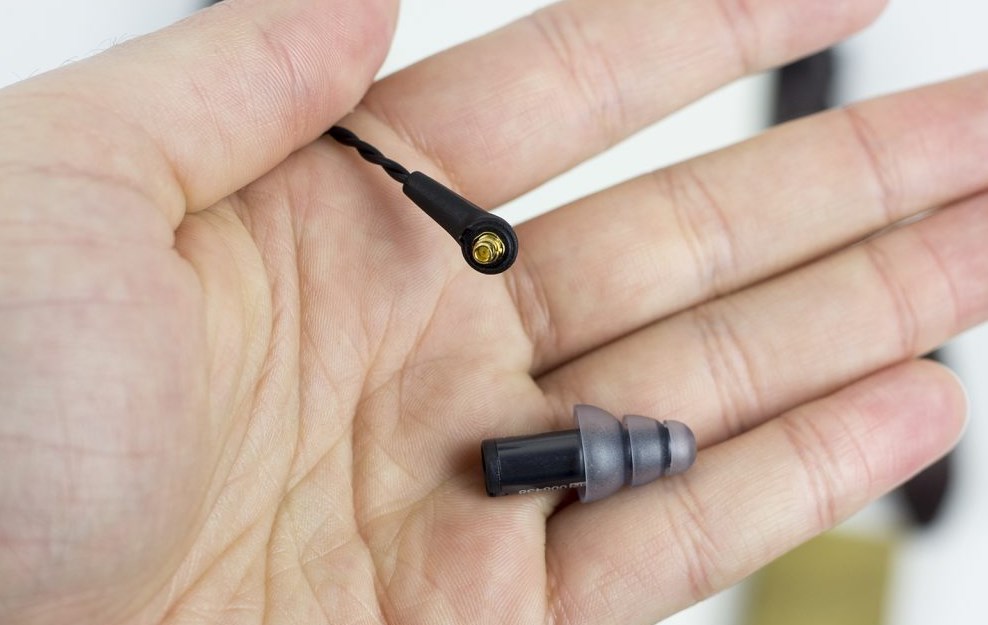
There are a few downsides to using in-ear monitors which you should be aware of before trying them on, too, including:
- Sound isolation
- Lack of power and definition in the low end
- Occlusion
Sound Isolation
The downside to the sound isolation of in-ear monitors is that it makes it harder to converse with your band members and also separates you from the energy of the crowd. This issue can be somewhat addressed by introducing ambient room microphones in your mix but it still won’t get you close enough to the real thing.
Lack of Power and Definition in the Low End
We are not saying that IEMs lack sufficient bass response or headroom, but some players have complained about the low frequencies not sounding very natural. High-end in-ears will certainly bump up the quality of the low-end response but for some players, it can still be far from the real feel of natural bass.
Occlusion
This is a common problem when using in-ears especially if you don’t get a proper fitting set. This problem can be addressed by deep ear impressions and counseling with
What Are the Best In-Ear Monitors for Drummers?
Before we dive into the best in-ear monitors for drummers, we first want to go ahead and share our evaluation criteria. These were the things we considered when adding an IEM to our list.
Our Evaluation Criteria
While curating the list for the best in-ear monitors for drummers, we took the following factors into consideration:
- Noise isolation
- Comfort
- Drivers
- Cost
Noise Isolation
Noise suppression is one of the most beneficial utilities that in-ears have in store for you. While the efficiency and strength of noise isolation vary from model to model, it is imperative to consider this factor before picking out your next set of in-ear monitors. High-end models can offer up to 40 dB of noise isolation which is ideal for live drummers.
Comfort

Comfort plays a critical role in the selection of in-ear monitors, especially if you are planning on using them during live performances. You want to get earphones that fit perfectly and leave no gaps without having to compromise on comfort. Earbuds that twitch or cause irritation while wearing are not ideal for drummers who are never in a position to divert their attention.
Drivers
Drivers are the components in your earphones that are responsible for recreating sound. As a rule of thumb, more drivers mean better sound quality and an accurate representation of the live mix.
Some manufacturers can fit up to eight drivers in a single earpiece while others can get away with a single dynamic driver that does it all. The choice for drivers eventually boils down to the personal preference of players but a dual-driver configuration is a good place to start for beginners.
Cost
Some high-end models of in-ear monitors can go upwards of $500, excluding accessories, which we understand is not the best option for beginners and first-timers. The fact is, if you are looking for a sturdy earpiece that performs reliably, you can easily get one for under $100.
Our objective was to cater to all kinds of audiences with this guide, so we decided to include some high-performance as well as budget-friendly models in this list.
Shure AONIC 5

Shure has been in the business for a long time and is considered one of the best when it comes to making microphones and earphones. The Shure Aonic 5 is especially great for drummers because of its flawless noise isolation technology that can suppress up to 37 decibels of external noise.
They come with three balanced armature drivers which creates a luscious surround sound with a tight bass response. Given the in-ears come with three drivers, Shure still managed to keep their size quite small. If you ever wanted a pair of lightweight, low-profile in-ear monitors, the Shure Aonic 5 will do you justice.
Pros
- Stunning noise isolation
- Heavy bass with balanced mid and high frequencies
- Very comfortable
Cons
- A bit expensive
Audio-Technica ATH-E70
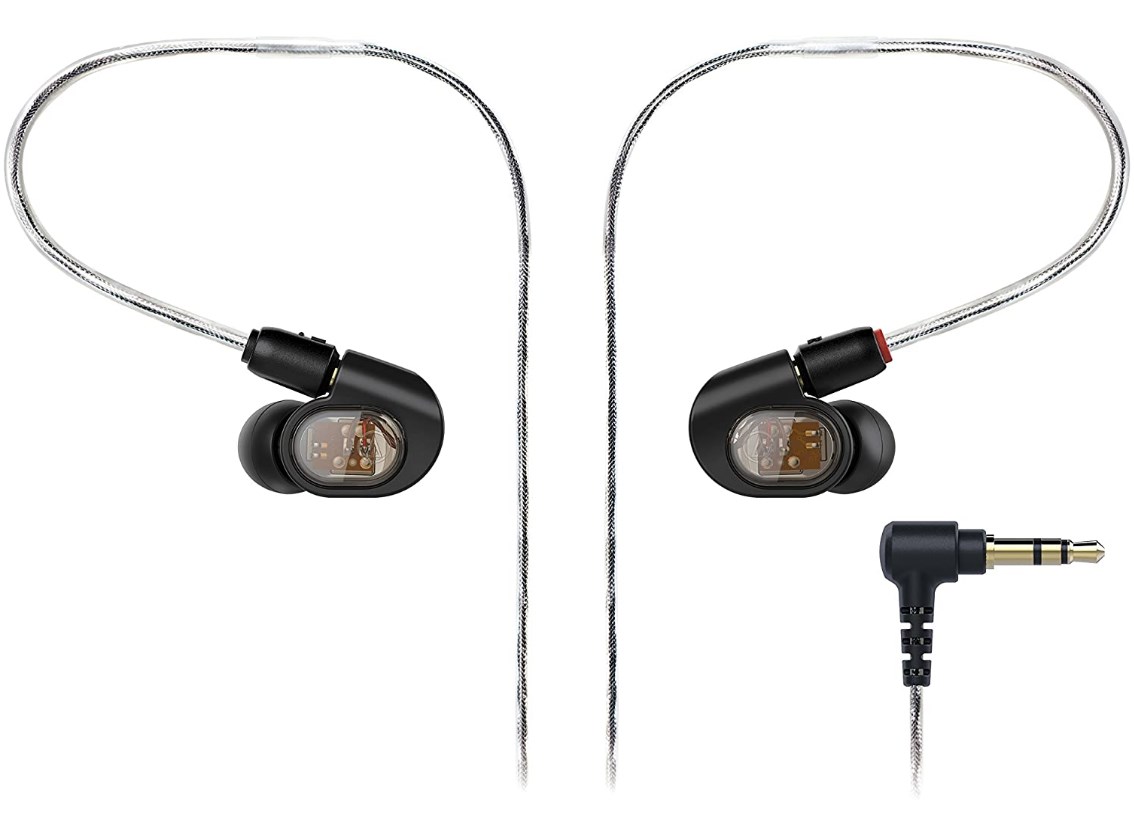
In the second place, we have a set of in-ear monitors made by Audio Technica, which works great with both stage and live setups. The ATH-E70 features soft silicone and Comply foam ear tips that seal around your ears perfectly. It comes with three balanced armature drivers and still manages to weigh under 7 ounces.
You also get a 1.6-meter long detachable cable that loops over your ears for a custom fit. The ATH-E70 offers jaw-dropping noise isolation effects with a frequency range of 20-19 kHz, a sensitivity of 109 dB, and an impedance of 39 ohms. The sound quality is neutral with tons of detail in the low as well as high frequencies.
Pros
- Flexible detachable cable
- Great noise isolation
- Comes with additional accessories, like ear tips and a carrying case
Cons
- No mic included
- Slightly more expensive than other models in the same performance range
Mackie MP-360
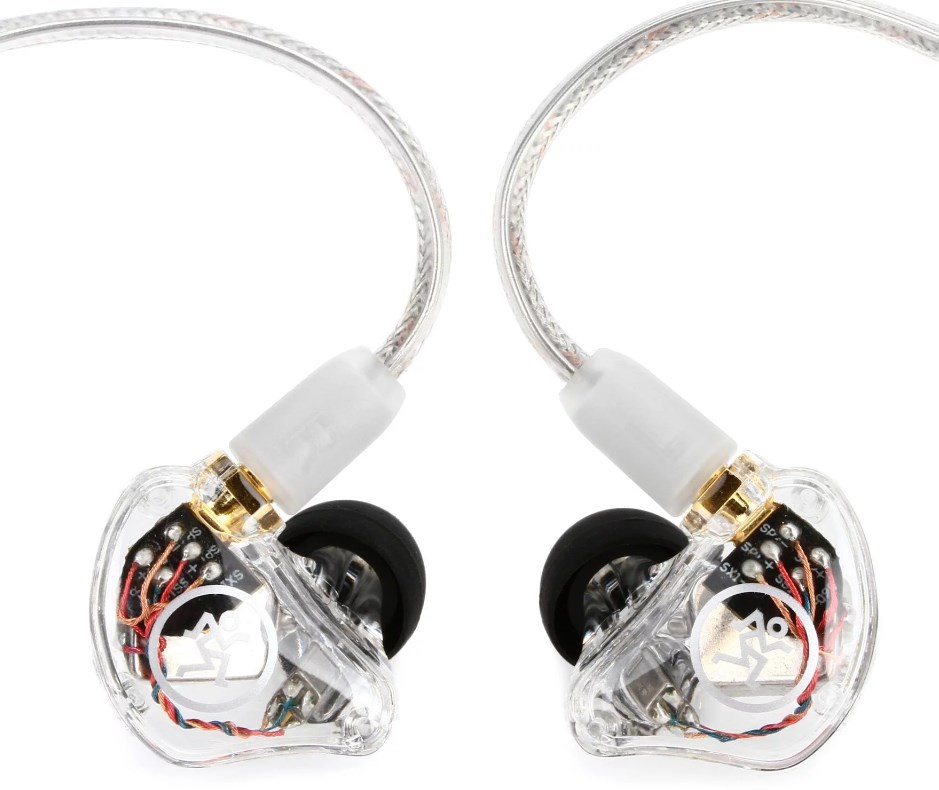
If you fancy listening to a variety of musical styles on your in-ear monitors, then the Mackie MP-360 is for you. With three balanced armature drivers, it recreates a crystal clear representation of live stage sounds. With up to 40 decibels of noise isolation capacity, you won’t be hearing anything apart from what you want to listen to.
Accessories include a hard case, extra cables, cleaning tools, a ¼ inch jack, and different sizes of ear tips. The hard case and MMCX connectors make traveling with this bad boy very easy. The build quality is top-notch and it offers a great price to value ratio for musicians who perform live regularly.
Pros
- Great overall sound with plenty of bass
- Ergonomic design with 40 dB of noise isolation
- Come with useful accessories
Cons
- Lacks some definition in the mid frequencies
Shure SE425
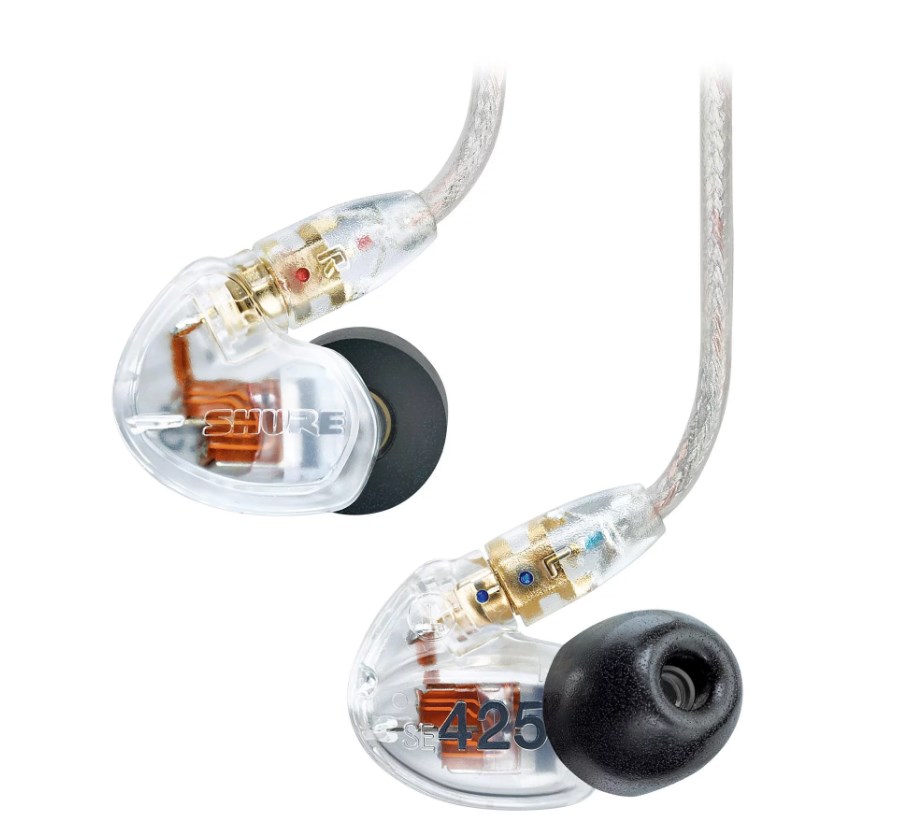
Number four on our list is the incomparable Shure SE425 Sound Isolating Earphones, a budget-friendly alternative to the Shure Aonic 5. These are just as great as the Aonic 5 but slightly scaled-down due to its dual-driver configuration.
They block out a fair amount of external noise (up to 37 dB) for drummers and allows them to dial in the preferred mix at low as well as high gain levels. The sound isolating sleeves provide optimum noise isolation as well as fit for drummers who tend to sweat a lot during their sets.
Pros
- Affordable
- Tons of detail in the mid and high frequencies
- Good grip and durability
Cons
- Not suitable for bass-heavy music
Westone UM Pro 10

Drummers who are looking for a practical set of in-ear monitors for those long practice sessions, look no further. Despite having only a single driver, Westone UM Pro is still one of the top recommended in-ears by professional musicians and drummers.
The UM Pro 10 is slightly bigger and heavier than some of our other listings but that has rarely ever caused a problem for players. If your primary focus is good noise suppression and mixing capabilities, then these in-ears will not disappoint you.
The single driver more than enough makes up for the tight bass response and thick mids you desire from any in-ear monitor. You can tell by the feel that the material used for the cables and the ear tips is of quite high quality. The Westone UM Pro 10 are particularly fit for drummers who play in rock and metal bands.
Pros
- Big sound and heavy bass
- Great fit and comfort
Cons
- Short cable
- Single dynamic driver
Sennheiser IE 400

Sennheiser has nailed a great piece of hardware with an affordable price tag for drummers, with the IE 400 in-ear monitors. The SYS 7 driver system with TruResponse technology by Sennheiser recreates a natural sound for drummers who want a clean mix in their monitors.
You wouldn’t expect much from in-ears in this price range, but the IE 400s somehow manages to break all the barriers to achieve a high-quality sound, bass response, and definition in the mid and high frequencies. This is a solid option for beginners and session drummers who need a reliable pair of monitors for indoor use.
Pros
- Affordable
- Plenty of bass and clarity in high frequencies
- Good mixing capability
Cons
- Soft carry case
- Not suitable for rough use
Knowledge Zenith KZ ZS10

KINBOOFI, creators of the KZ ZS10 Pro IEM headphones, have taken things to the next level with their flagship model. These in-ears feature four balanced armature drivers, one dynamic driver, and a 10 mm magnetic dynamic driver. They have managed to achieve a sensitivity of 111 dB and an impedance of 30 ohms over a frequency range between 7 – 40,000 Hz.
You get three pairs of ear tips and one detachable cable as part of the accessories but no travel case. In terms of sound, the multi-driver configuration helps these monitors achieve an impressively tight bass response and clearly elevated trebles. Panning multiple instruments and vocals in the same mix is a breeze because of their flexible frequency response.
Pros
- Great sound and instrument separation in the mix
- Both wired and wireless connectivity
- Affordable and sturdy
Cons
- No carry case
- May take a while to get used to the size and dimensions
Bose SoundSport

We saved the last spot on this list for the most affordable set of in-ears that are favored by both beginners and pros equally in this category. The Bose SoundSport offers wireless connectivity, which makes them ideal for drummers who don’t want to get tangled up with cables.
The Bluetooth technology will limit you from using these monitors for live gigs or recording in studios because of the lag. However, if you want to practice at home or just jam out to some songs, these will do great.
In terms of sound quality, it offers quite a bit of headroom in the low end and a decent amount of clarity in the high-frequency response. These are a great pair of in-ears for the average listener and drummers who want a reliable source to listen to music.
Pros
- Wireless Connectivity
- Affordable price tag
- Balanced sound with minimal coloration
Cons
- Not ideal for live shows and studio performances
- Clunky design
Some Best Use Tips
- Gain: Adjust the gain on your monitors every time you do a soundcheck. This will massively improve the quality of sound as gain plays a critical role in the mix.
- Panning: Pan the instruments as they are arranged on the stage for the best reproduction of on-stage mix.
- Ambiance microphones: If you are feeling a bit cut-off from the crowd due to the noise isolation of your IEMs, ask your engineer to add a couple of ambient room mics to your mix so you can share the energy of the crowd while playing.
- EQ: EQ’ing is very important when it comes to nailing the mix. Spend some time with your sound engineer to work out the best EQ curves that give you optimum results during live performances.
- Cleaning: Sooner or later, your in-ears will accumulate wax and other dirt particles which can hamper the sound quality or worse, damage them permanently. Most kits come with a cleaning tool, which must be used regularly to ensure a high life expectancy of your IEM’s and prevent any muffling, distortion, or outright loss of sound.
- Backup: The last thing you want, when you snap a cable, lose an ear tip, or the driver straight-up dies on you, is to run out of backup. At the end of the day, IEM’s are fragile accessories that need a lot of care when handling, so always keep a backup for emergency situations.
Our Top Recommendations
If we had to pick our top three recommendations from this list, we’d certainly take cost into consideration but as mentioned before, noise cancellation holds more value for drummers when it comes to in-ears.
Shure AONIC 5
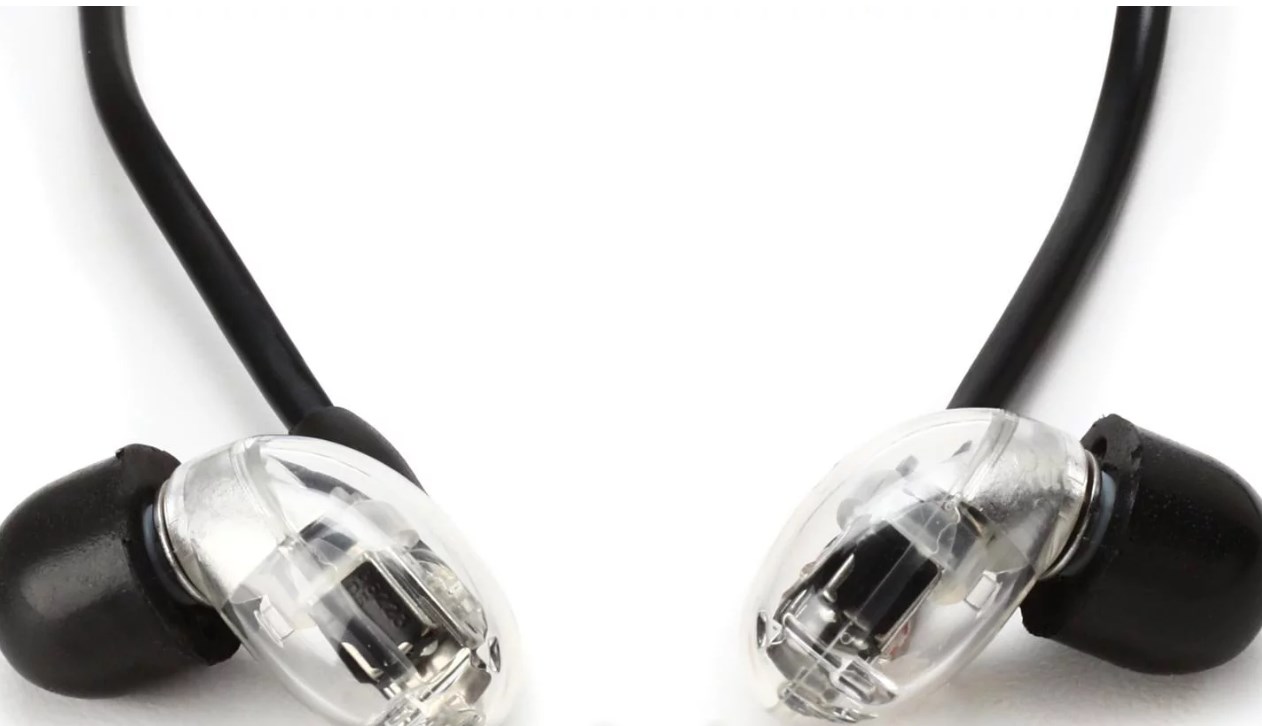
Shure has rallied quite a fanbase with their cutting-edge ideas and ultra-high-end musical accessories, and they certainly didn’t disappoint with the Aonic 5. If you don’t mind shelling out a few extra bucks for the best active noise cancellation technology in the market then you have to give these pairs of in-ears a try.
The Aonic 5 comes with an adjustable isolation control that lets you tune your mix to perfection. We also loved the detachable cables that come with an MMCX adaptor, a large selection of ear tips, and the cleaning tool, all of which come as part of the accessories kit.
Mackie MP-360

In our humble opinion, the Mackie MP-360 is the king of mid-range IEM’s with sound quality being its key feature. You may find yourself fiddling with the settings from time to time in order to fine-tune your mix, but we’ve gotten some sincerely incredible results from this bad boy.
The over-the-ear style earpiece can fit comfortably in your ears for hours without hurting your ear canals. Drummers can finally stop worrying about ear fatigue or sound leak issues if they decide to go with this product.
Knowledge Zenith KZ ZS10
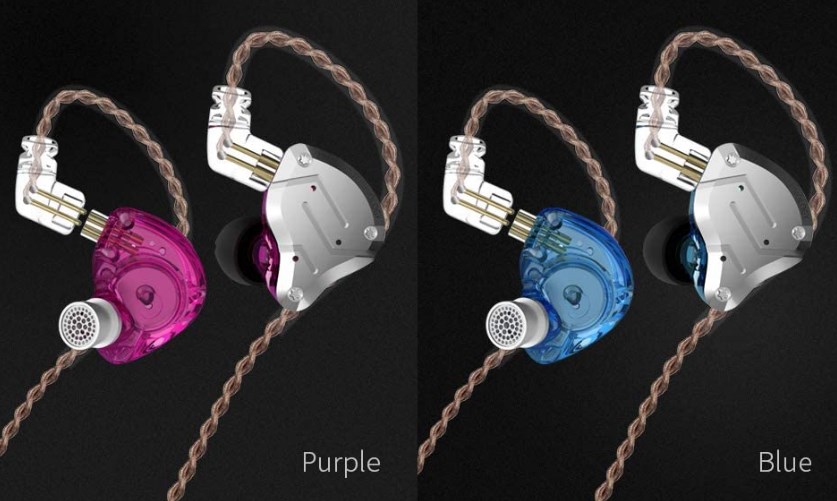
The KZ ZS10 comes with resin plus stainless metal shells, which are not only lightweight and great-looking, but also fit very well, too. They come with six drivers that can cater to the most demanding mixing needs that drummers could ask for.
We have to agree that the absence of a carry case is a slight letdown, here but you still get access to a bunch of accessories that let you customize colors, ear tips, and also a one-year warranty. All in all, when you throw in the noise isolation factor and the overall sound quality on top, it makes this product a solid choice for all types of drummers.
Frequently Asked Questions
Answer: Durability and comfort should be your primary focus, aside from decent audio reproduction, when it comes to In-ear monitors. Custom-made IEM’s offer the best level of fit and comfort, whereas universal models offer the best bang for your buck.
Some other factors to consider when purchasing in-ear monitors are the types of cables and ear tips that will suit you the best. Removable cables are a good option if you tend to break them a lot during gigs. However, if you don’t want to get tangled up in those cables then wireless IEM’s are the way to go.
When it comes to ear tips, most brands will offer you a choice between foam and silicone ear tips. Silicone tips use suction for maintaining their grip, which is a great option for regular performers. Foam on the other hand provides better noise cancellation, but they put more pressure on the ear canals, which can become uncomfortable rather quickly.
Answer: IEM’s are a great option for anyone who wants a superior music listening experience. Right off the bat, you will notice a significant improvement in the audio quality, as well as suppression of surrounding noise. They offer more bass, clarity, and a rich spectrum of high frequencies.
Compared to most headphones and over-ears, IEM’s are lightweight and can be comfortably worn for longer durations. Custom molded IEM’s offer the best noise cancellation experience that lets you enjoy your music even at low levels.
Answer: Drivers in IEM’s are used to recreate the sound, which means the more drivers, the better the quality of music. While many brands have nailed their single-driver models, some custom-made models can pack as many as eight drivers into a single earpiece.
With standard single-driver in-ears, there is only so much a single driver can do, outputting a limited frequency range and lacking a fair amount of power in the low end. When you add in more drivers, the burden of recreating the audio spectrum rests evenly on every driver, resulting in high-fidelity audio.
Answer: The National Institute on Deafness and Other Communication Disorders (NIDCD) recommends people who are frequently subjected to dangerously loud noises(100 dB+) to use custom hearing protection. It is an excellent defense against noise-induced hearing loss and tinnitus, which is fairly common amongst performing musicians.
Our Final Thoughts
Getting your hands on an in-ear monitor for drummers is fairly effortless if you know what it is that you are looking for. Drummers do tend to be slightly rough-handed when it comes to handling delicate devices, so it’d be wise to consider durability as well as cable length options before your next earphone purchase.
From these IEMS, our favorite would have to be the Shure AONIC 5, but you can’t go wrong with any of our other top three picks. Just keep in mind that, like any other product, cheaper models tend to have an inferior sound quality and design, which is to be expected. That said, you can occasionally find good deals on high-end products from time to time. So keep an eye out, and you just may snag the best ones on the market for just a song.

